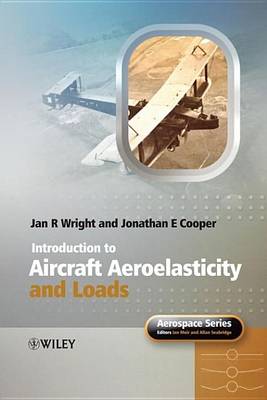Aerospace
1 primary work
Book 20
Introduction to Aircraft Aeroelasticity and Loads
by Jan Robert Wright and Jonathan Edward Cooper
Published 1 January 2007
Aeroelastic phenomena arising from the interaction of aerodynamic, elastic and inertia forces, and the loads resulting from flight / ground manoeuvres and gust / turbulence encounters, have a significant influence upon aircraft design. The prediction of aircraft aeroelastic stability, response and loads requires application of a range of interrelated engineering disciplines. This new textbook introduces the foundations of aeroelasticity and loads for the flexible aircraft, providing an understanding of the main concepts involved and relating them to aircraft behaviour and industrial practice.This book includes the use of simplified mathematical models to demonstrate key aeroelastic and loads phenomena including flutter, divergence, control effectiveness and the response and loads resulting from flight / ground manoeuvres and gust / turbulence encounters. It provides an introduction to some up-to-date methodologies for aeroelastics and loads modelling. It lays emphasis on the strong link between aeroelasticity and loads. It also includes provision of MATLAB and SIMULINK programs for the simplified analyses.
It offers an overview of typical industrial practice in meeting certification requirements.
It offers an overview of typical industrial practice in meeting certification requirements.
